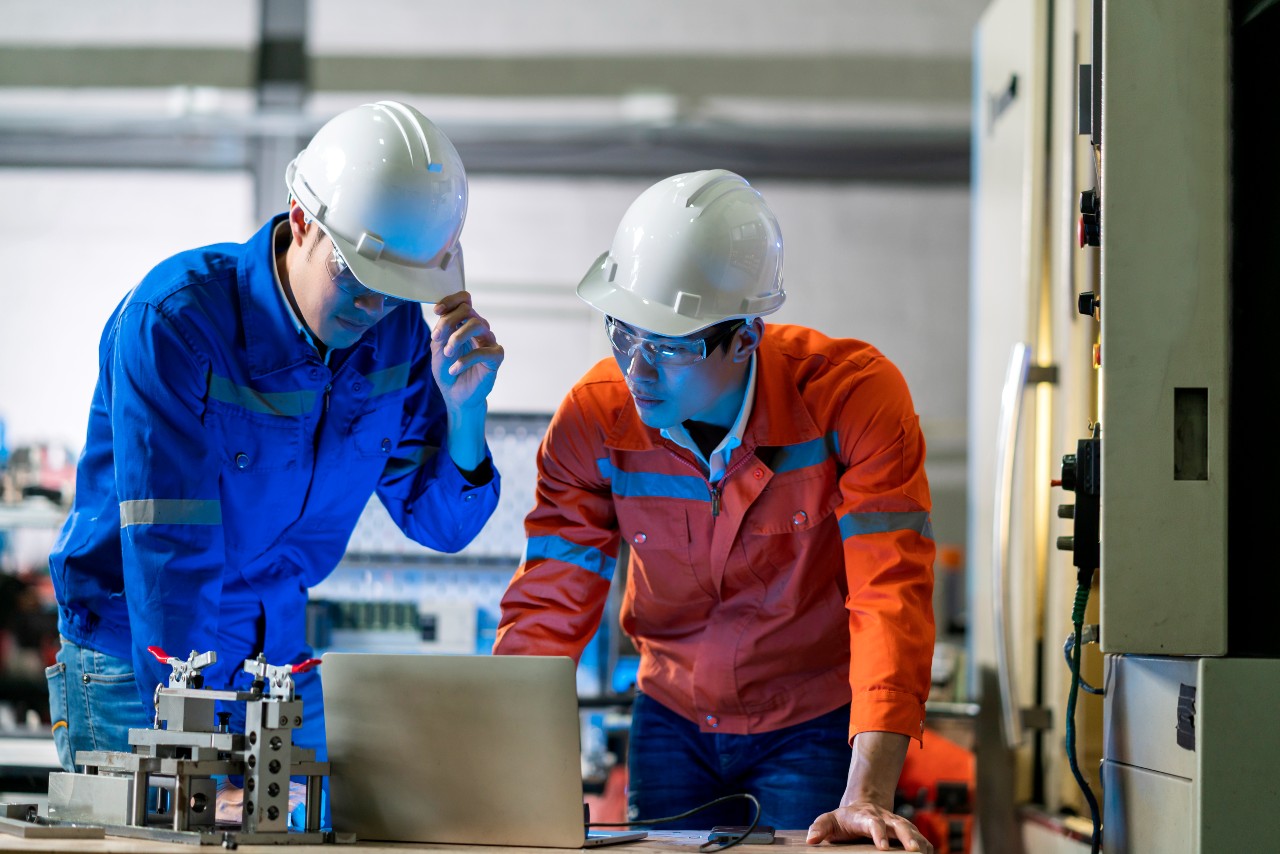What Is Total Productive Maintenance?
Total productive maintenance (TPM) is a maintenance strategy that emphasizes involving all members of a facility in maintenance activities, rather than relying solely on a dedicated maintenance team. This approach encourages all employees to utilize their skills and knowledge to incorporate routine maintenance.
In the realm of manufacturing maintenance, TPM maintenance is a comprehensive strategy designed to optimize facility maintenance. Its main objective is to eliminate resource waste, employee accidents, product defects, and unplanned downtime. This is achieved through preventive maintenance, ongoing training, and productive cooperation between the production and maintenance staff.
Equipment effectiveness is the cornerstone of complete productive maintenance. TPM maintenance offers proactive maintenance programs, productivity targets, and skills training to equipment operators, empowering them to take full responsibility for the maintenance of the assets delegated to them. By increasing workforce autonomy, TPM decreases reliance on reactive maintenance.
How Does Total Productive Maintenance Work?
Maintenance, reliability, and operations personnel are constantly aiming for “perfect production” despite the fact that unforeseen issues can arise even in the most well-designed facilities. Even if perfect production isn’t completely attainable, total productive maintenance can bring a facility as close as possible to achieving it.
Total productive maintenance considers maintenance a competitive advantage. This is because if an organization experiences little to no equipment failures or downtime, the organization will consequently experience increased productivity and profits compared to its non-TPM peers. TPM also employs the 5S methodology, which promotes the standardization and organization of facility procedures. This leads to numerous advantages for both workplace quality and production.
Below, we will highlight the primary advantages of implementing total productive maintenance.
Who Should Participate in Total Productive Maintenance?
By the philosophy of total productive maintenance, everyone, from top management to plant operators, must be involved in maintenance. But how? Each member of an organization can contribute in their way:
Top Management & Reliability Engineers
Management should participate in TPM by promoting it as a corporate policy. Reliability engineers must also be involved, as they can interpret maintenance data stored in their computerized maintenance management system (CMMS) to find relevant metrics and obtain business information.
Operators
Operators own the assets of a plant, which means that they must take responsibility for the daily maintenance of their machines. This includes regular cleaning and lubrication, which are necessary for the health of the equipment. Operators are also expected to identify and report the first signs of equipment degradation and identify opportunities to improve the operation of the equipment.
Maintenance Managers & Technicians
Maintenance managers and technicians are expected to train and support operators so that they can achieve their objectives and carry out more advanced preventive maintenance activities. They are also expected to take responsibility for improvement measures that affect the key performance indicators (KPIs) established by reliability engineers.
Use a NEXGEN CMMS solution to Your Advantage
Want to Learn More About Industry Best Practices?
What Are the Benefits of Total Productive Maintenance?
- Less Unplanned Maintenance: By implementing well-organized and scheduled maintenance procedures, the equipment can be kept in excellent condition. Furthermore, the implementation of total productive maintenance encourages all staff members at the facility to take responsibility for the upkeep of their machines, and maintenance is viewed as a beneficial investment for them. As TPM fosters a sense of personal connection to the maintenance process, assets are looked after more effectively.
- Reduced Equipment Downtime: Prioritizing regularly scheduled maintenance results in a reduction in equipment malfunctions. This translates to less downtime and more productivity throughout the organization.
- Lower Manufacturing Costs: When the overall equipment efficiency (OEE) improves, it leads to a decrease in production costs. Enhanced productivity generates increased profits and reduces expenses related to equipment downtime and repairs.
- Strengthened Workplace Safety: TPM is founded on the principles of the 5S methodology, which involves the systematic organization and cleanliness of the workplace. The 5S steps, which include sorting, straightening, shining, standardizing, and sustaining, help reveal underlying issues and difficulties in maintaining the work environment.
- Better Overall Performance: When all members of a facility actively monitor maintenance, it prevents minor repairs from going unnoticed. This shift away from reactive maintenance helps to manage the backlog of tasks. Addressing smaller tasks on time reduces the burden on the maintenance team and allows them to focus on larger, more critical tasks, ultimately improving the overall performance of the facility.
What are the 8 Pillars of TPM?
These 8 TPM pillars include:
- Autonomous Maintenance
- Planned Maintenance
- Quality Maintenance
- Focused Improvement
- Early Equipment Management
- Training and Education
- Safety, Health, and Environment
- Administration
How to Implement TPM?
-
Identify a Plot Area
When launching a TPM program, starting with a pilot area can increase staff acceptance by demonstrating the benefits of the process. To select equipment for the pilot area, three questions should be considered:
- Which equipment is easiest to improve?
- Where is the bottleneck in production?
- Which equipment causes the most problems for operators?
Opting for equipment that is easy to improve can result in immediate and positive outcomes, but it may not effectively test the TPM process. Addressing equipment that is causing production delays can lead to quick payback, but there is a risk of extended downtime if critical assets are used as an example. Fixing equipment that causes the most trouble for operators may generate strong support for the TPM program, but it may not offer as much immediate payback, and it can lead to disinterest if the problem takes too long to solve.
For first-time TPM program implementations, selecting the equipment that is easiest to improve is typically the best option. However, those with some or extensive experience may want to address bottlenecks as temporary stock or inventory can be built to withstand downtime and minimize risks. Involving employees from all aspects of the business (such as operators, maintenance personnel, managers, and administration) in the selection process can help to increase staff acceptance. A visual aid, such as a project board, can be used to display progress and keep everyone informed. By involving employees in the selection process and using a visual representation of progress, the acceptance of the TPM program can be improved, leading to better results.
-
Restore Equipment to its Prime Operating Condition
Ensuring equipment is operating at its prime condition is a critical aspect of Total Productive Maintenance (TPM). Achieving this involves implementing the 5-S system and autonomous maintenance. The 5-S system involves continuous efforts to maintain equipment and its surroundings in its original condition. This includes organizing tools, removing debris, cleaning the equipment and surroundings, and developing a standardized work process.
Once a baseline condition is established, autonomous maintenance can be implemented by training operators to clean and inspect equipment for wear and abnormalities, labelling set points, identifying lubrication points, and creating an autonomous maintenance checklist. Regular auditing ensures the process is followed.
-
Start Measuring Overall Equipment Effectiveness (OEE)
The third step in implementing a TPM program is to monitor and track the Overall Equipment Effectiveness (OEE) of the target equipment. You can track OEE either manually or through automated software, which should include code tracking for unplanned downtime. Regular measurement of OEE provides data-driven insights into the effectiveness of your TPM program and allows you to track progress over time.
To accurately assess unplanned downtime, it’s important to categorize every event, including unknown or unallocated stoppage time. To get an accurate representation, gather data for at least two weeks, which will help identify where the biggest losses occur. A Top 5 Losses chart, sorted in descending order by the amount of downtime caused by each loss, can provide a simplified view of the data.
-
Address Major Losses
Addressing major losses is a crucial step in implementing total productive maintenance. This involves analyzing data on overall equipment effectiveness and identifying the sources of unplanned downtime. To do this, a cross-functional team of operators, maintenance personnel, and supervisors should be assembled to review the OEE data using root cause analysis.
The team should select the loss with the biggest impact on production, gather detailed information on the symptoms of the problem, and consider using a visualizer like a fishbone diagram to track and record information while at the equipment. Brainstorming with the team can help identify potential causes of the problem and the most effective ways to address them.
It’s crucial to plan downtime so that you can put the agreed-upon remedies into action and gauge their effectiveness over time. If the fix resolves the issue, it should be implemented, and the team can move on to the next cause of stoppage time. However, if the solution is not effective, the team should gather more information and hold another brainstorming session to identify alternative solutions. Taking a systematic and data-driven approach to address major losses can improve overall equipment effectiveness and increase productivity.
-
Implement Proactive Maintenance Techniques
The final step in implementing a TPM program involves integrating proactive maintenance techniques into the program. The third pillar of planned maintenance, which entails deciding which components should undergo proactive maintenance, is followed in order to achieve this. Three criteria should be used to make this decision: stress locations, components that fail, and wear components. Infrared thermography and vibration analysis are common techniques used to identify stress points.
Proactive maintenance intervals should be established next. These intervals can be adjusted as necessary and should be based on the current year level and a baseline replacement interval for wear and failure-prone components. A proactive replacement schedule can then be created based on run time rather than calendar time. To complete the process, develop a standardized process for creating work orders based on the planned maintenance schedule.
Maintenance intervals can be optimized by establishing a feedback system. Operators can use log sheets to record replacement information and component conditions at the time of replacement. Conduct monthly audits of planned maintenance to ensure that the schedule is being followed and that component logs are up to date. Review the logs to determine whether any adjustments to the maintenance schedule need to be made.
Want to learn more about industry best practices or how to use a comprehensive CMMS solution to your advantage? Click the button below to see NEXGEN in action.






